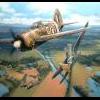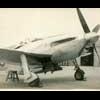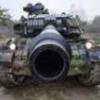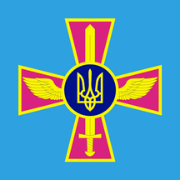-
Posts
2,968 -
Joined
-
Last visited
Profile Information
-
Gender
Male
-
Location
In the Naughty Corner
Recent Profile Visitors
7,408 profile views
mhaselden's Achievements

Very Obsessed Member (5/9)
1.4k
Reputation
-
That only works if you're in an environment where your comms between the radar platform and the operators can't be jammed...unless we start trusting AI onboard the radar platform to do the job of the operators and make the operational decisions. Experience in Ukraine suggests we shouldn't trust many (any?) comms links to be unjammable.
-
I think crew capacity is a bigger issue. The Hawkeye only has to control airborne elements of a carrier's air fleet. That's small beans compared to a large-scale air operation that's run by the USAF. I don't see Hawkeye being able to control the air fight for something the scale of Desert Storm, for example.
-
Oh, it's far worse than that. Software developers are now using AI tools like ChatGPT to create software code. So we have AI-generated software which presents all sorts of risks for malware, kill-switch code etc. to be inserted into a program without any human realizing it. Obviously, this is a rather doom-laden perspective...but never underestimate the potential for human laziness and greed to lead to unintended consequences.
-
There's a world of difference between driverless cars, which are aimed at reducing road deaths and injuries, and using AI to actively kill human beings. There's also a world of difference between sending a ballistic (or non-ballistic) missile to hit a human-targeted point on the ground versus having AI algorithms select targets dynamically while the missile is in flight. The problem here is that humans are just as error prone, sometimes more so, than algorithms (it rather depends on the situation). It's not helped when the adversary isn't using standard military equipment, which makes it challenging for both humans and AI to differentiate legitimate targets from innocent civilians. AI is here to stay and it will be used increasingly on the battlefield (it is already). That said, the issues of authority, responsibility, and accountability remain largely unresolved.
-
The F-35B has smaller weapons bays than the A and C variants, which is why it can't carry the B61-12 nuke. The C-variant isn't certified to carry the weapon...though, presumably, that would be feasible if it became a priority requirement.
-
As @canberraman noted, the C variant was designed for carrier operations. The UK dithered around, with the initial requirements for the QE carriers demanding that the platform could be modified (via rebuild...not during operations) between cat-and-trap and ramp launched options. IIRC, the cat-and-trap solution was deemed too high risk and too costly, and so was axed in favour of a ramp-only solution which inevitably meant the UK would purchase the F-35B.
-
Aided and abetted by the Harrier Mafia which continued to push for the STOVL variant despite there not being a proven need for it. A mix of As and Cs with a conventional carrier would, IMHO, have provided much better capabilities than any purchase of Bs and the associated nonsense about converting the QE class carriers from ramp to conventional launch (which was part of the original requirements).
-
I was delighted to hear this news. It's bugged me for many, MANY years that the UK went whole-hog on the B-variant which has such lower performance compared to the A- and C-variants. That said, 12 airframes isn't sufficient to keep a full squadron up and running. Hopefully, more will be procured to at least equip one full squadron.
-
Is this any use?
-
The long-canopy "Mk II" airframes had an additional window added above the original trapezoidal window, providing a continuous view from horizon-to-horizon above the aircraft. I suspect that's the reason why it looks like some fabric has been removed. The airframe in the image below is very dusty but the reinforcing strip around the outside of this new glazed portion, between the trapezoidal window and the canopy, can be made out: (Source: https://dingeraviation.net/wellesley/wellesley.html) This image, although poorer overall quality, shows the feature better than most: (Source: https://dingeraviation.net/wellesley/wellesley.html)
-
The window was apparently removable. Here's a pic showing the window in place: (Source: https://dingeraviation.net/wellesley/wellesley.html)
-
I’m pretty sure the windows don’t hinge. If they hinged inwards, it would further encumber an already cramped space in the fuselage interior. If they hinged outwards, it would actually restrict the field of view above. Such a mechanism would also require a really beefy hinge to stop the window flying off in the slipstream…and if the window did fly off (or get shot off), it would likely do a lot of damage to the fabric and structure of the rear fuselage and tail. Happy to be proved wrong, but I’m pretty sure the windows were simply removable.
-
I suspect it's just a gun mount. It was possible to install a gun firing out of each side-facing window. I suspect the longer canopy, addition of smaller windows above the trapezoidal side windows, and removal of fabric fuselage covering under the long canopy all helped improve visibility for the rear crew as they sought to identify and engage threats.
-
Maybe they were Boy Scouts? Coat donned…..
-
You! Naughty corner! NOW!!!! 😃






.thumb.jpg.76f12b87ce9ca9929c9aabdcf8f9d2dd.jpg)










